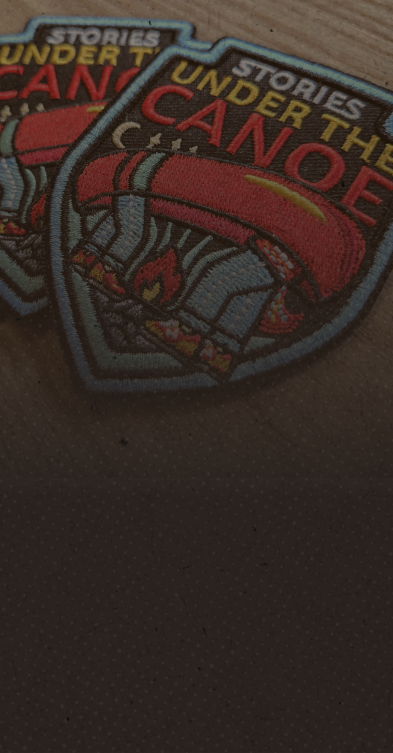

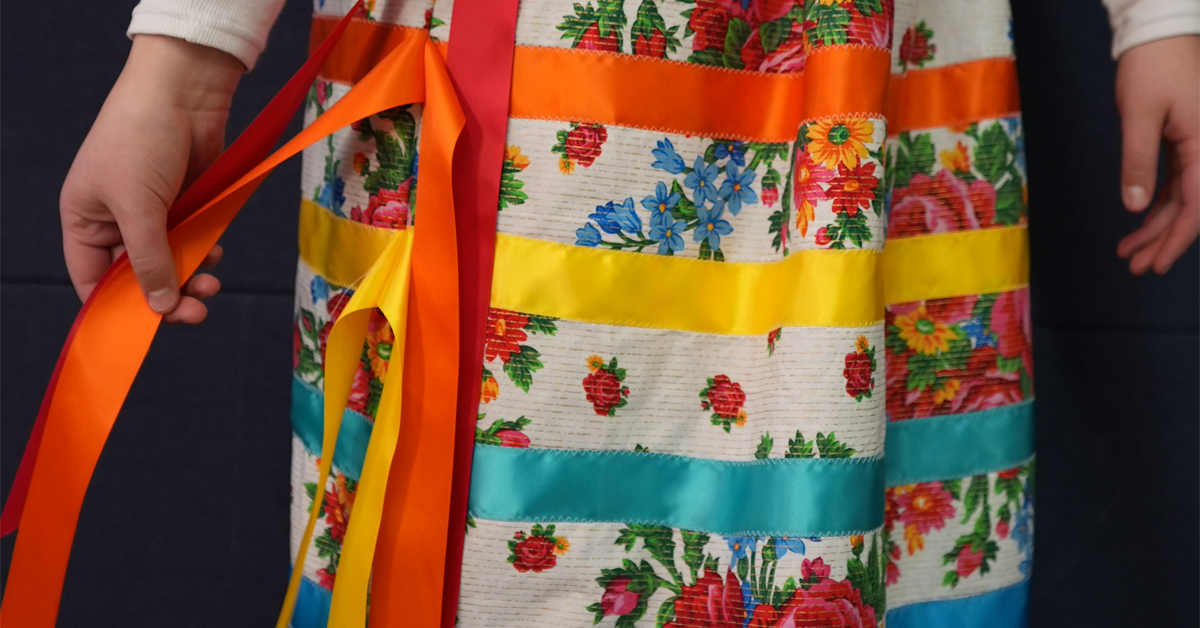
Most people gather their first impressions within 30-seconds of meeting someone for the first time – how they carry themselves, the tone of their voice and body language, and by what someone is wearing – sparking interest and hinting to your cultural identity, personal aesthetic, and personality.
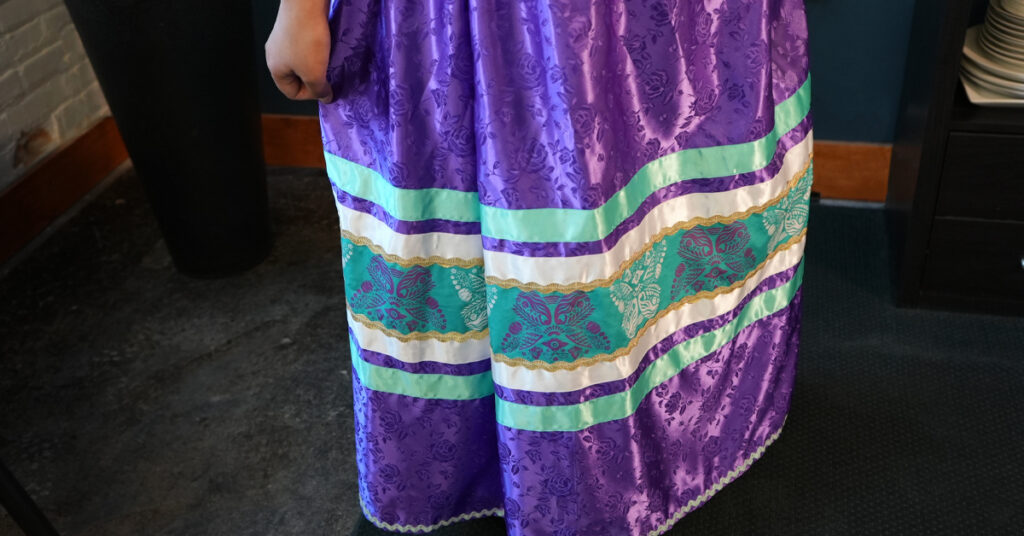
However, on December 18th 2020, 10-year old Isabella Kulak, an Indigenous youth from the Cote First Nation in Saskatchewan, proudly wore her beautiful ribbon skirt made by her Auntie, Farrah Sanderson of the Cote First Nation, for her school’s formal wear day; she faced criticism from a teaching assistant who told her ribbon skirt wasn’t “formal enough”. She was compared to another student who had worn a store bought dress. That day, she came home and laid in her room until she was ready to talk to her mother, Lana Kulak. Although the school later apologized for discriminating against Isabella’s choice of formal wear, Isabella and her family felt this was an opportunity to turn adversity into advocacy and to encourage others to learn more about Indigenous traditions and the deep meanings behind them.
On January 4th 2021, Isabella Kulak returned to her school with her family and community members wearing ribbon skirts and shirts. Drummers from Cote First Nation played her an “Honour Song” . With her family and community members supporting her, Isabella met with top officials at the front of her school. The following year on January 4th, 2022 there was an unofficial Ribbon Skirt Day at Isabella’s school. KCI.
Thanks to Isabella’s courageous voice to speak up for change, her personal experience and voice motivated Canada’s Senate to create an Act Respecting a National Ribbon Skirt Day that received Royal Assent on January 4th, 2023. Isabella and her family were there to witness the passing alongside Honourable Mary-Jane McCallum and Chief George Cote of the Cote First Nations. Her experience not only encouraged a nation to learn more about Indigenous traditions and history, but she inspired a nationwide movement for Indigenous girls, women and Two-Spirit to boldly wear sacred ribbon skirts with strength and pride.
Today, on January 4, 2025, we continue to celebrate National Ribbon Skirt Day, a day to acknowledge the courage of young Indigenous people, and a call-to-action to better understand Indigenous cultural traditions and history.
A Rich And Diverse History

But what are ribbon skirts, and what’s the special meaning for those who wear them?
More than just an article of clothing, ribbon skirts symbolize connection, strength, womanhood, and Indigenous pride. Traditionally worn by the matriarchs of each First Nation during ceremonies and special events, the ribbon skirt’s appearance – with shiny, colourful ribbon strips, bold patterns, and unique appliques – has evolved over time.
Ribbon skirts have a rich and diverse ancestry. Traditionally worn in First Nations culture by the matriarchs, women, girls, and members who identified as holding both male and female spirits (Two Spirits), there was an influence on the look and feel of the ribbon skirt when European settlers traded cloth, ribbons and sewing techniques.
Contemporary Cultural Pride
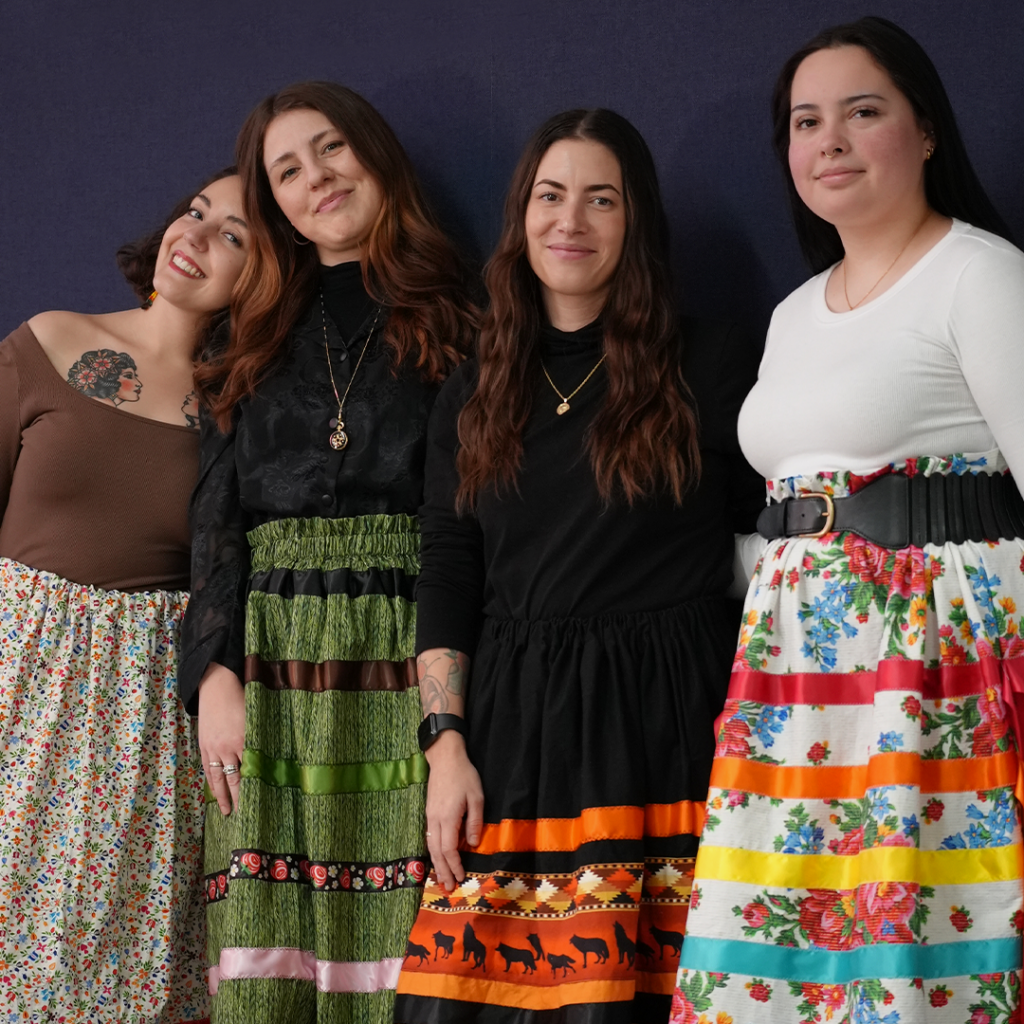
Today, the ribbon skirt elements are seen as a form of personal expression and cultural pride, with many modern ribbon skirts regarded as political statements, symbols of resistance, and a way to express pride in Indigenous identity and heritage.
Traditional ribbon skirts are ankle-length with horizontal lines, while modern ribbon skirts can vary in cut and style, with some featuring simple and sometimes ornate appliqués, lace overlay, and shiny ribbons in an array of colours reflecting the light of those who wear them. The ribbon skirt look and feel has extended to ribbon shirts and other formal wear worn with pride by Indigenous people as the cultural fabric that connects us.
Over the past 6 weeks, we’ve had the privilege to welcome Ella Belanger to the Vincent Design team as a graphic design intern. A proud member of the Berens River First Nation, Ella is In her second year of the program, and is greatly influenced by her Anishinaabe/Ojibwe heritage.
Inspired by all things creative, she shared her love of designing ribbon skirts since taking a ribbon skirt workshop in high school with a Two-Spirited knowledge keeper. As part of her school project, Ella made her first ribbon shirt for her dad, Stanford Boulanger, who had planned to run for Chief of Berens River First Nation. Since then, she has made more than 20 ribbon skirts, shirts, and pants as well.
Ella recognizes that designing and wearing a ribbon skirt is an act of reclaiming her Indigenous culture. “I’m one of the few that make them since some people from my reserve aren’t as traditional compared to others. But we are slowly reclaiming our culture back through more teachings.”
Ella said that when she’s customizing a ribbon skirt for someone, she puts a lot of care into each item. “Ribbon skirts are very personalized and my teacher explained to the students in our workshop that the styles of ribbon skirts have shifted over the years from traditional styles to more modern colours.”
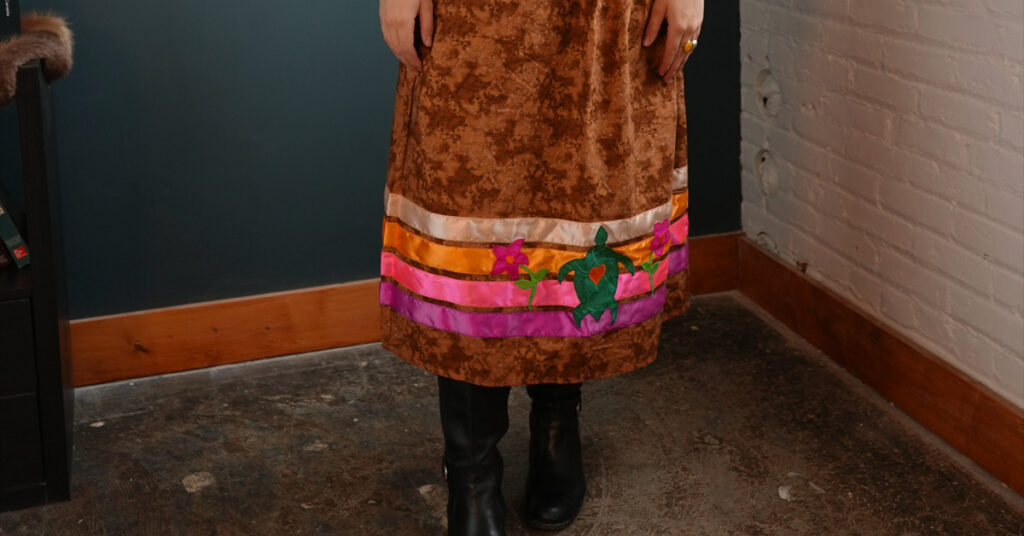
She shared that her first ribbon skirt was designed to reflect her traditional Spirit name, ‘Making Fire Woman’, showcasing fiery colours of orange, yellow, and red, with a complementary warm grey. “Three nights before I was given my traditional name, the knowledge keeper had a dream of me chopping poplar and other types of wood, and said this represented my traditional name and colours.”
When preparing to create a ribbon skirt or shirt for a friend or relative, Ella encourages them to choose “whatever calls to them and whatever style and finish they are drawn to. From the base fabric that is solid or patterned, to the colours of the ribbons that pull in detailed colours of the pattern; even the waistband can be flat or gathered. The design can even go down to the matching thread or zigzagged stitch which brings the skirt to life. I love using ‘sister stitches’ because it’s not perfect and sometimes goes off the track.There is so much that can be considered part of the design that pulls the look together, but in the end, it’s the final result that counts.”
Making ribbon skirts brings me joy! I love reconnecting with my culture and wearing them for special occasions, ceremonies, and any event to showcase and feel proud of my Anishinaabe/Ojibwe culture. My dad told me that my kokum would have been so proud of me.
